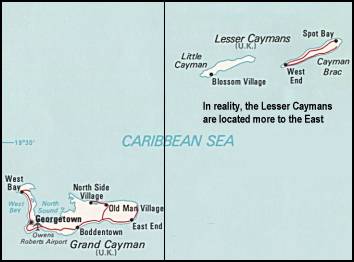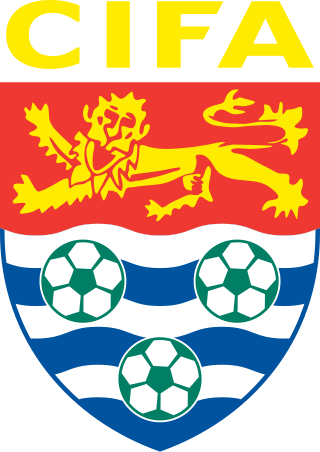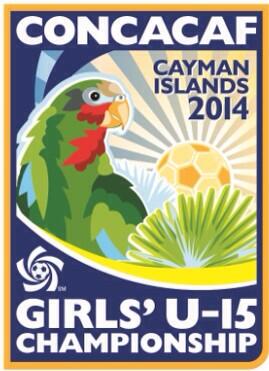
The transport infrastructure of the Cayman Islands consists of a public road network, two seaports, and three airports.

The transport infrastructure of the Cayman Islands consists of a public road network, two seaports, and three airports.
As of 2000, the Cayman Islands had a total of 488 miles (785 km) of paved highway.
Driving is on the left, and speed is reckoned in miles per hour, as in the UK. [1] The legal blood alcohol content is 100mg per 100ml (0.1%), the highest in the world. [2] [3]
Two ports, Cayman Brac and George Town, serve the islands. One hundred and twenty-three ships (of 1,000 GT or more) are registered in the Cayman Islands, with a total capacity of 2,402,058 GT/3,792,094 tonnes deadweight (DWT). Some foreign ships (including vessels from Cyprus, Denmark, Greece, Norway, the UK, and US) are registered in the Cayman Islands under a flag of convenience. (All figures are 2002 estimates.)

There are three airports on the Islands. The main airport Owen Roberts International Airport serving Grand Cayman, Charles Kirkconnell International Airport serving Cayman Brac and Edward Bodden Airfield serving Little Cayman.
A fleet of Share taxi minibuses serves Grand Cayman. [4]
A daily service starts at 6.00 from the depot and runs as follows from George Town to: [5]
Colour-coded logos on the front and rear of the buses (white mini-vans) identify the routes:
| Bus routes travelling through George Town | ||
|---|---|---|
| Line | Route | |
| Route 1 | George Town to West Bay | |
| Route 2 | George Town to West Bay | |
| Route 3 | George Town depot to Bodden Town | |
| Route 4 | George Town depot to East End | |
| Route 5 | North Side to East End | |
| Route 6 | North Side to West Bay | |
| Route 7 | George Town inter-district service | |
| Route 8 | George Town depot to Hutland in North Side | |
| Route 9 | George Town through Frank Sound North Side | |

The CaymanIslands is a self-governing British Overseas Territory, and the largest by population. The 264-square-kilometre (102-square-mile) territory comprises the three islands of Grand Cayman, Cayman Brac and Little Cayman, which are located south of Cuba and north-east of Honduras, between Jamaica and Mexico's Yucatán Peninsula. The capital city is George Town on Grand Cayman, which is the most populous of the three islands.

The Cayman Islands are a British overseas territory located in the Caribbean that have been under various governments since their discovery by Europeans. Christopher Columbus sighted the Cayman Islands on May 10, 1503, and named them Las Tortugas after the numerous sea turtles seen swimming in the surrounding waters. Columbus had found the two smaller sister islands and it was these two islands that he named "Las Tortugas".

The Cayman Islands are a British dependency and island country. It is a three-island archipelago in the Caribbean Sea, consisting of Grand Cayman, Cayman Brac, and Little Cayman. Georgetown, the capital of the Cayman Islands is 438 km (272 mi) south of Havana, Cuba, and 504 km (313 mi) northwest of Kingston, Jamaica, northeast of Costa Rica, north of Panama and are between Cuba and Central America. Georgetown's geographic coordinates are 19.300° north, 81.383° west.
This is a demography of the population of the Cayman Islands including population density, ethnicity, religious affiliations and other aspects of the population.

Grand Cayman is the largest of the three Cayman Islands and the location of the territory's capital, George Town. In relation to the other two Cayman Islands, it is approximately 75 miles (121 km) southwest of Little Cayman and 90 miles (145 km) southwest of Cayman Brac.
Cayman Airways is the flag carrier airline of the British Overseas Territory of the Cayman Islands. With its head office in Grand Cayman, it operates mainly as an international and domestic scheduled passenger carrier, with cargo services available on most routes. Its operations are based at Owen Roberts International Airport in George Town, Grand Cayman. The company slogan is Those who fly us love us.

Little Cayman is one of three Islands that make up the Cayman Islands. It is located in the Caribbean Sea, approximately 60 miles (96 km) northeast of East End, Grand Cayman and five miles (8 km) west of West End, Cayman Brac. Little Cayman is the least populous island of the three, with a permanent population of about 160 (2021) including seasonal residents/homeowners. The majority of the population are expatriate workers from Jamaica, the Philippines, and Honduras and from other Latin American countries as well as Canada, the USA, India, Australia, Scotland, England, and South Africa. There are a handful of local Caymanians estimated as fewer than 20. It is about 10 miles (16 km) long with an average width of 1 mile (1600 m) and most of the island is undeveloped. Almost the entire island is at sea level. The highest elevation is about 40 feet. The rainy season, which consists of mostly light showers, occurs in Mid-April until June and again in mid-September to mid-October. There will be occasional quick rain showers in the early morning hours. The coolest months are from End of November until Mid March as the cold fronts coming in from the North which the temperature can drop into the low'70s. The Hottest and dryest months are in Summer starting mid-June to mid-September with temperatures between the mid-80s and high 90s. There are no large or predatory or venomous animals that pose a threat to humans.

George Town is the capital and largest city in the Cayman Islands, located on Grand Cayman. As of 2022, the city had a population of 40,957, making it the largest city of all the British Overseas Territories.

Cayman Brac is an island that is part of the Cayman Islands. It lies in the Caribbean Sea about 145 km (90 mi) north-east of Grand Cayman and 8 km (5.0 mi) east of Little Cayman. It is about 19 km (12 mi) long, with an average width of 2 km (1.2 mi). Its terrain is the most prominent of the three Cayman Islands due to "The Bluff", a limestone outcrop that rises steadily along the length of the island up to 43 m (141 ft) above sea level at the eastern end. The island is named after this prominent feature, as "brac" is a Gaelic name for a bluff.
Darwin Kurt Tibbetts, OBE is a Caymanian politician and former Leader of Government Business in the Cayman Islands. Tibbetts served as leader of the People's Progressive Movement party from August 2002 – February 2011. Tibbetts served as an elected member for the district of George Town, serving six terms in the Legislative Assembly of the Cayman Islands.

Sir Captain Charles Kirkconnell International Airport is an airport serving Cayman Brac, Cayman Islands. It is one of the hubs for Cayman Airways with flights to Owen Roberts International Airport on Grand Cayman, and Edward Bodden Airfield on Little Cayman. It is the only airport on Cayman Brac.

The Cayman Islands Football Association is the governing body of football in the Cayman Islands. The Cayman Islands Football Association governs all National Team programs, youth development leagues, Women's league and the Cayman Islands Men's Premier League.
The Cayman Islands FA Cup is the top knockout tournament of the Cayman Islands football. The cup was first known as the Schlitz Beer Cup and was donated by Jacques Scott. It was retired by Saprissa FC, the title holders from 1972 to 1974, and was renamed as the CIFA FA Cup.
The National Trust for the Cayman Islands is the national trust serving the Cayman Islands. Its purposes are to preserve sites of artistic and architectural interest in the islands and to provide protection for local natural resources and wildlife. It also oversees a program in which sites of special historic interest are marked with a plaque noting their importance.

Hurricane Paloma was a strong late-season Atlantic hurricane that set several records for its intensity and formation. It was the sixteenth tropical storm, eighth hurricane and fifth major hurricane of the 2008 Atlantic hurricane season. Paloma was, at the time, the third most powerful November hurricane on record in the Atlantic Basin, behind only the 1932 Cuba hurricane, 2020's hurricanes Iota and Eta, and a tie of 1999's Hurricane Lenny, and 2001's Hurricane Michelle. Paloma also marked the first time that at least one major hurricane formed in every month of the hurricane season from July to November, with only June not having a major hurricane in the season.

The 2014 CONCACAF Women's U-20 Championship was the seventh edition of the CONCACAF Women's U-20 Championship. The United States went into the tournament as defending champions and successfully retained their title.

The 2014 CONCACAF Girls' U-15 Championship was an association football tournament that took place in the Cayman Islands during August 2014. Each match lasted 70 minutes.
Results from the 2014–15 Cayman Islands FA Cup
Islay Conolly, MBE was a Caymanian teacher and school administrator. Serving as a teacher and principal at various schools on the islands, she became Chief Education Officer in 1970. She was honored by the Caymanian government with the Spirit of Excellence Award during National Heroes Day and was first recipient of the Chamber of Commerce's Lifetime Achievement Award in Education. Conolly was honored as a Member of the Order of the British Empire (MBE) in the 1982 New Year Honours.
Annie Huldah Bodden OBE was a Caymanian civil servant, lawyer, and politician. She was the first woman to serve in the Legislative Assembly of the Cayman Islands, of which she was a member from 1961 to 1964 and from 1965 to 1984.
![]() This article incorporates public domain material from The World Factbook. CIA.
This article incorporates public domain material from The World Factbook. CIA.